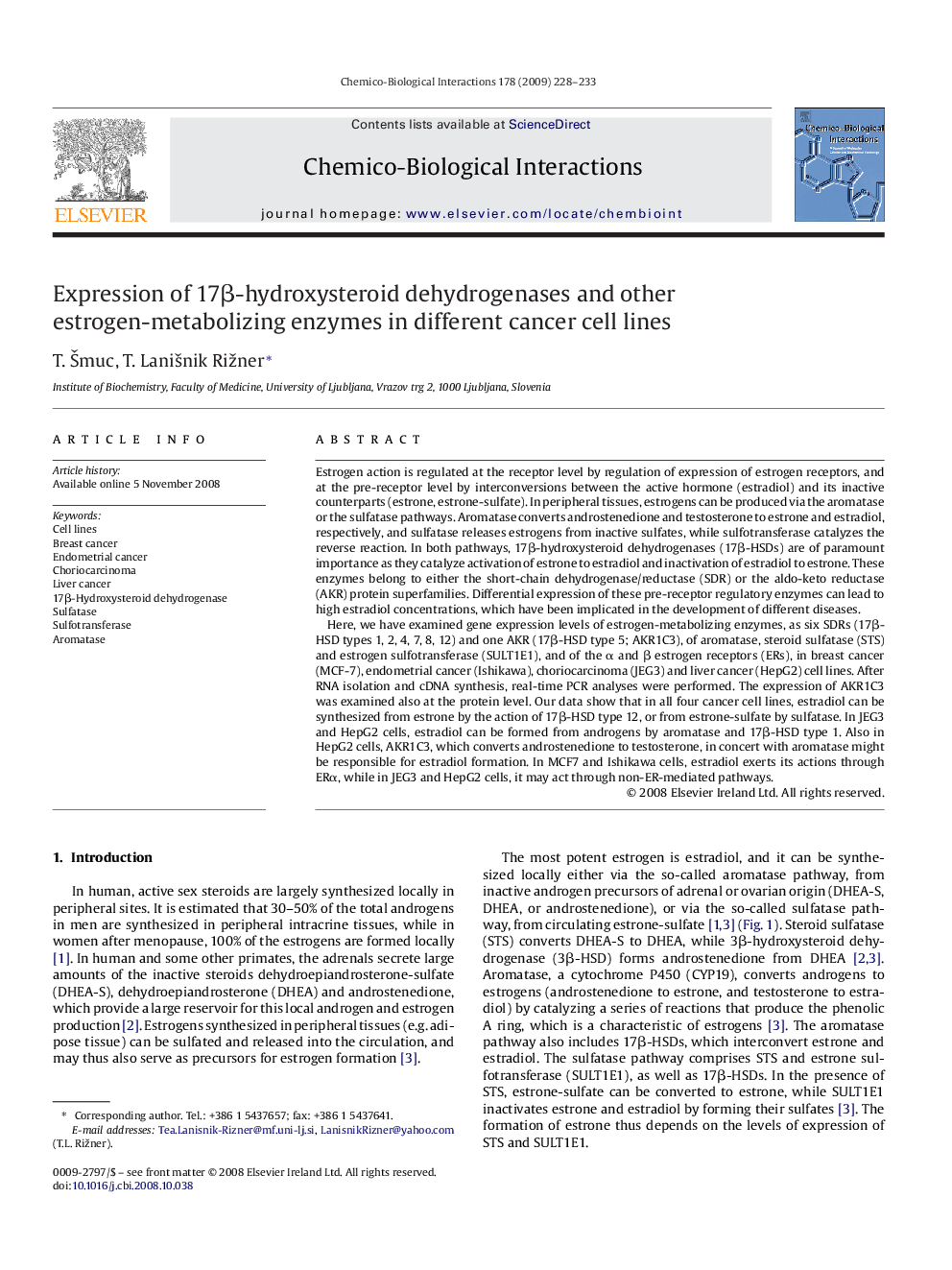| Article ID | Journal | Published Year | Pages | File Type |
|---|---|---|---|---|
| 2582347 | Chemico-Biological Interactions | 2009 | 6 Pages |
Estrogen action is regulated at the receptor level by regulation of expression of estrogen receptors, and at the pre-receptor level by interconversions between the active hormone (estradiol) and its inactive counterparts (estrone, estrone-sulfate). In peripheral tissues, estrogens can be produced via the aromatase or the sulfatase pathways. Aromatase converts androstenedione and testosterone to estrone and estradiol, respectively, and sulfatase releases estrogens from inactive sulfates, while sulfotransferase catalyzes the reverse reaction. In both pathways, 17β-hydroxysteroid dehydrogenases (17β-HSDs) are of paramount importance as they catalyze activation of estrone to estradiol and inactivation of estradiol to estrone. These enzymes belong to either the short-chain dehydrogenase/reductase (SDR) or the aldo-keto reductase (AKR) protein superfamilies. Differential expression of these pre-receptor regulatory enzymes can lead to high estradiol concentrations, which have been implicated in the development of different diseases.Here, we have examined gene expression levels of estrogen-metabolizing enzymes, as six SDRs (17β-HSD types 1, 2, 4, 7, 8, 12) and one AKR (17β-HSD type 5; AKR1C3), of aromatase, steroid sulfatase (STS) and estrogen sulfotransferase (SULT1E1), and of the α and β estrogen receptors (ERs), in breast cancer (MCF-7), endometrial cancer (Ishikawa), choriocarcinoma (JEG3) and liver cancer (HepG2) cell lines. After RNA isolation and cDNA synthesis, real-time PCR analyses were performed. The expression of AKR1C3 was examined also at the protein level. Our data show that in all four cancer cell lines, estradiol can be synthesized from estrone by the action of 17β-HSD type 12, or from estrone-sulfate by sulfatase. In JEG3 and HepG2 cells, estradiol can be formed from androgens by aromatase and 17β-HSD type 1. Also in HepG2 cells, AKR1C3, which converts androstenedione to testosterone, in concert with aromatase might be responsible for estradiol formation. In MCF7 and Ishikawa cells, estradiol exerts its actions through ERα, while in JEG3 and HepG2 cells, it may act through non-ER-mediated pathways.
